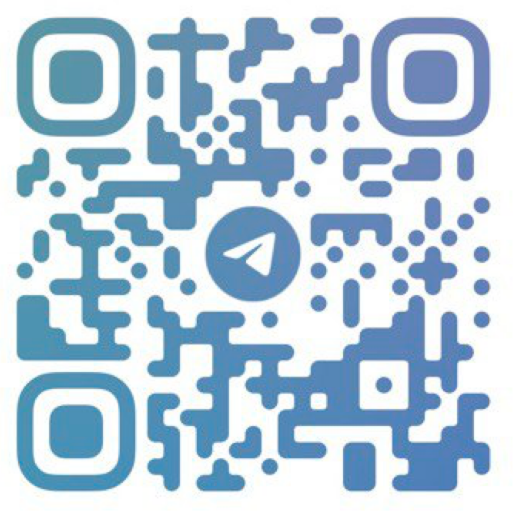










Multichain Translation site
Multichain is the ultimate Router for web3, enabling cross-chain interactions. Multichain was born as Anyswap on the 20th of July 2020.
Tags:aggregating bridges blockchain tools cross-chain bridges cryptocurrency defi DEX AggregatorsMultichain - Cross-Chain Router Protocol - CoinNav.io

TL;DR
Multichain is a cross-chain bridging platform that enables the seamless transfer of cryptocurrencies and NFTs across different blockchains. Formerly known as Anyswap, Multichain offers users the option to bridge their assets through pegged tokens or liquidity pools. By utilizing the Multichain Router, users can easily determine the most efficient method for bridging their desired coins.
For cryptocurrencies that have native tokens on multiple chains, Multichain utilizes liquidity pools to facilitate cross-chain swaps. In cases where there is no native token available, Multichain securely locks up the token in a smart contract and creates a pegged token on the target chain.
In the future, Multichain's native token, MULTI, will serve as a governance token. Existing holders of ANY, the previous governance token of Anyswap, have the opportunity to convert it to MULTI at a 1:1 ratio. The introduction of MULTI will allow token holders to actively participate in the governance decisions of the Multichain platform.
Your Go-To Source for the Latest News and Tools in the Blockchain Sector - Coinnav.io
Introduction
In your pursuit of investments or yield across different blockchains, you've probably come across Multichain. This project is renowned for its ability to bridge tokens, making it an invaluable tool in today's seamless cross-chain experience. While some projects may eventually develop their own multi-chain capabilities, services like Multichain remain vital. In this article, we'll explore the unique features of Multichain and delve into the underlying mechanics that set it apart from other bridges.
What is Multichain?
Multichain is an innovative open-source protocol known as the Cross-Chain Router Protocol (CRP). It enables users to bridge tokens across different blockchains, fostering interoperability in the decentralized finance (DeFi) ecosystem. The project was established in July 2020 and has since rebranded as Multichain. Notably, Multichain received support from Binance, which provided $350,000 as part of its accelerator program. Additionally, a $60,000,000 investment round was led by Binance Labs, with participation from prominent entities such as the Tron Foundation, Sequoia Capital, and IDG Capital.
With support for over 74 chains, including BNB Smart Chain, Fantom, and Harmony, Multichain offers users seamless asset transfers across various blockchains through its Cross-Chain Bridges and Cross-Chain Routers. Furthermore, Multichain has introduced a governance token called MULTI, enabling token holders to actively participate in the project's upcoming governance mechanisms. This allows stakeholders to have a say in the decision-making processes of the Multichain ecosystem.
How does Multichain work?
Multichain employs two primary methods to enable token bridging. Firstly, it utilizes smart contracts to lock tokens on one blockchain and create wrapped tokens on another blockchain. In cases where this method is not feasible, Multichain leverages a network of liquidity pools across different chains to facilitate the exchange of bridged tokens. These processes are typically completed within a span of 30 minutes, ensuring minimal slippage.
Multichain supports Ethereum Virtual Machine (EVM) networks as well as a range of blockchain networks utilizing diverse technologies such as Cosmos and Terra. Additionally, Multichain offers a bridging service specifically designed for Non-Fungible Tokens (NFTs). Projects seeking to bridge their tokens can collaborate with Multichain to issue them onto new blockchains. This service is provided free of charge and can be completed within a week.
To facilitate these operations, Multichain relies on a network of Secure Multi Party Computation (SMPC) nodes operated by various parties. Now, let's delve deeper into each of these aspects.
Bridging Assets
Multichain simplifies cross-chain transfers by employing a standard crypto pegging mechanism for certain coins and tokens. For instance, if you wish to bridge BNB from BNB Smart Chain to Ethereum, Multichain will lock your BNB in a smart contract on BNB Smart Chain and mint an equivalent pegged BNB token on Ethereum in a 1:1 ratio. This functionality was initially provided by Multichain when it operated as Anyswap.
Liquidity Pools
While some tokens can be bridged using the MPC method mentioned above, others, like USDC, already exist natively on multiple blockchains. To bridge such assets, you will need to engage in token swapping.
Swapping requires liquidity, meaning someone must be willing to trade with you for the desired token. This liquidity is often provided through liquidity pools, where users contribute their tokens in exchange for a portion of the transaction fees.
Cross-Chain Routers
The Multichain Router efficiently handles user requests and utilizes the appropriate bridging method mentioned earlier. This feature enhances the user experience by enabling the transfer of supported assets across multiple chains, whether they are native tokens or bridged through Multichain. In some cases, projects with native tokens on certain chains but not others can employ Multichain's hybrid approach to bridge their assets.
SMPC Nodes
Multichain relies on a network of nodes called Secure Multi Party Computation (SMPC) to ensure security and decentralization. These independent nodes collectively sign transactions without revealing the complete set of private keys. Through a Distributed Key Generation algorithm, each node possesses a portion of the private key, eliminating single points of failure. The Multichain MPC network 2.0 consists of open nodes operated by the community and partners, reinforcing performance and decentralization.
What Sets Multichain Apart?
With numerous bridge options available, why should you consider Multichain? Here are several distinguishing factors that make Multichain unique and appealing:
- Token Issuance Across Chains: Multichain enables projects to issue tokens across multiple chains, providing seamless bridging solutions for both projects and users.
- Comprehensive Liquidity Access: Multichain goes beyond simple 1:1 cross-chain bridges by offering a trusted system for accessing liquidity across blockchains. This feature has traditionally been challenging to implement securely and reliably. Multichain boasts over 2,000 bridges, connecting crypto tokens and NFTs to a wide range of projects and DeFi protocols, including renowned platforms like SushiSwap and Curve Finance.
- Backing from Trusted Industry Leaders: Multichain has garnered support and funding from reputable industry leaders and venture capital firms. This backing adds an extra layer of trust compared to anonymous bridging services.
- Extensive Token Support: Multichain stands out by providing a vast array of supported tokens, surpassing the capabilities of other bridges. It offers support for cryptocurrencies and NFTs on over 74 blockchain networks, including both EVMs (Ethereum Virtual Machines) and non-EVMs.
By encompassing these unique features, Multichain distinguishes itself as a reliable and comprehensive solution for cross-chain bridging and liquidity access in the blockchain ecosystem.
Introducing the MULTI Token
The MULTI token serves as the governance token for Multichain, formerly known as Anyswap. Previously, the governance token was called ANY. However, users now have the ability to convert ANY to MULTI at a 1:1 ratio through the Multichain website. This conversion process ensures that the total supply of MULTI will reach 100 million, assuming all ANY holders choose to convert their tokens.
In addition to the MULTI token, Multichain also offers veMULTI, which enables token holders to stake their MULTI tokens and earn rewards in the form of Multichain bridge fees. Furthermore, veMULTI holders have the privilege of participating in governance proposals by casting their votes through the veMULTI framework. This ensures that MULTI token holders have a say in shaping the future of the Multichain ecosystem.
How do I use Multichain? A Step-by-Step Guide
Multichain provides a seamless token bridging experience, allowing you to bridge tokens in under 30 minutes. Here's how you can bridge BUSD from BNB Smart Chain to Polygon using the Multichain Router:
1. Open the Multichain website and navigate to the Router.
2. Connect your wallet by clicking the [Connect Wallet] button in the top right corner. Make sure you're connected using BNB Smart Chain.

3. Select BNB Chain mainnet as the network to bridge from in the top field.

4. Select BUSD - BUSDToken as the token you want to bridge in the top field.

5. Select Polygon as the network to bridge to in the bottom field. The BUSD Binance-PegBUSDToken should automatically be chosen.

6. Input the amount you want to bridge before clicking the [Swap] button. You'll now need to confirm the transactions in your wallet.

Final Remarks
Multichain stands out for its extensive range of bridgeable tokens, aiming to establish itself as the ultimate router in the Web3 landscape. If you're actively engaged in DeFi and require seamless transitions across networks such as Solana (SOL), Avalanche (AVAX), and Ethereum (ETH), Multichain provides a convenient solution.
With its focus on enhancing interoperability, Multichain simplifies the movement between decentralized applications (DApps) and the broader blockchain ecosystem. As interoperability continues to play a crucial role in the advancement of Web3, Multichain's contribution in this regard is expected to be significant.








